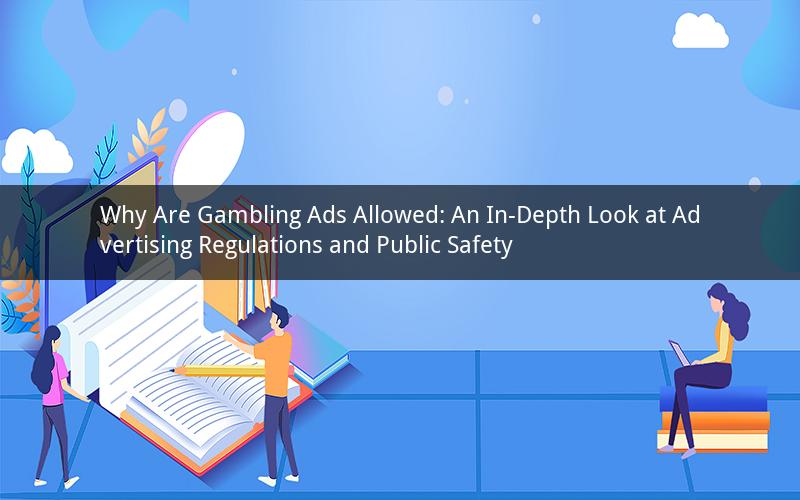
Gambling advertisements have been a topic of considerable debate, with many questioning why they are allowed at all. This article delves into the reasons behind the existence of gambling ads, examining the regulatory framework, the economic impact, and the potential risks involved. By understanding these factors, we can gain a clearer perspective on the role of gambling advertisements in society.
1. The Legal Framework: Why Are Gambling Ads Permitted?
The legality of gambling advertisements varies from country to country, with some regions having strict regulations while others have a more lenient approach. In most cases, the presence of gambling ads is permitted due to the following reasons:
a. Economic Benefits: Governments often allow gambling advertisements because they generate significant revenue through taxes and fees imposed on gambling operators. This revenue can be used to fund public services, infrastructure, and other government initiatives.
b. Legalization of Gambling: In many countries, gambling is legal and regulated. As a result, advertising is seen as a natural extension of the industry, allowing operators to promote their services to potential customers.
c. Consumer Demand: Consumers have shown a strong interest in gambling, leading governments to recognize the potential for economic growth and job creation within the sector. Advertising helps to satisfy this demand by informing consumers about available gambling options.
2. The Economic Impact: How Do Gambling Ads Contribute to the Economy?
Gambling advertisements have a significant economic impact, with several positive aspects:
a. Job Creation: The gambling industry employs millions of people worldwide, from casino staff to marketing professionals. Advertising helps to attract new customers, which in turn supports job growth within the sector.
b. Tax Revenue: As mentioned earlier, gambling advertisements contribute to government revenue through taxes and fees. This funding can be used to support public services and infrastructure.
c. Tourism: In countries where gambling is legal, advertisements can attract tourists, boosting the local economy and creating jobs in related industries such as hospitality and transportation.
3. The Potential Risks: Are Gambling Ads Harmful?
While gambling advertisements have economic benefits, some argue that they pose potential risks to public safety and well-being. The following concerns highlight the potential negative impacts of gambling ads:
a. Problem Gambling: Advertisements may encourage individuals with a predisposition to develop gambling problems. Research has shown that exposure to gambling ads can trigger addictive behaviors, leading to financial and personal problems.
b. Youth Vulnerability: Young people are more susceptible to the persuasive power of gambling ads, which can lead to excessive gambling and associated risks.
c. Social Harms: Problem gambling can have a significant impact on individuals, families, and communities. The social costs of gambling-related harm include increased crime rates, mental health issues, and strained relationships.
4. The Role of Regulation: How Can Gambling Ads Be Managed?
To mitigate the potential risks associated with gambling advertisements, regulatory bodies have implemented various measures:
a. Advertising Standards: Governments and industry regulators have established guidelines for gambling ads, ensuring they are responsible and do not target vulnerable groups.
b. Consumer Protection: Some countries have implemented measures to protect consumers from gambling-related harm, such as self-exclusion programs and responsible gambling campaigns.
c. Research and Monitoring: Continuous research and monitoring of gambling advertisements help identify potential risks and inform regulatory decisions.
5. The Future of Gambling Ads: What Changes Can We Expect?
As public awareness of the potential risks associated with gambling advertisements grows, the future of the industry may see several changes:
a. Stricter Regulations: Governments and regulators may impose stricter advertising standards to protect consumers and reduce the likelihood of problem gambling.
b. Technological Solutions: The use of technology, such as age verification and ad blocking, may become more prevalent to limit exposure to gambling ads.
c. Increased Public Awareness: As more people become aware of the potential risks, public pressure may lead to changes in the way gambling is advertised and regulated.
In conclusion, the presence of gambling advertisements is a complex issue with both economic benefits and potential risks. By understanding the regulatory framework, economic impact, and risks involved, we can better appreciate the role of gambling ads in society. As the industry evolves, it is crucial for governments, regulators, and industry operators to work together to ensure that gambling advertisements are responsible and do not harm the public.